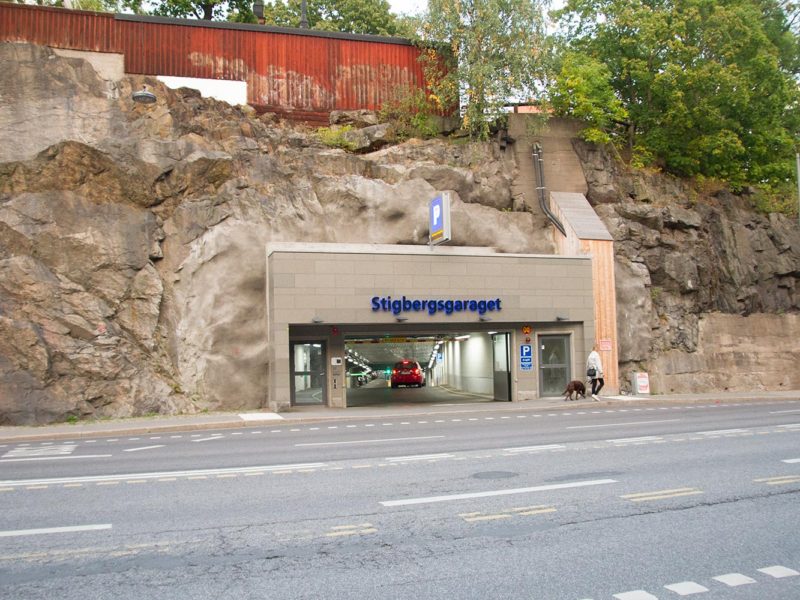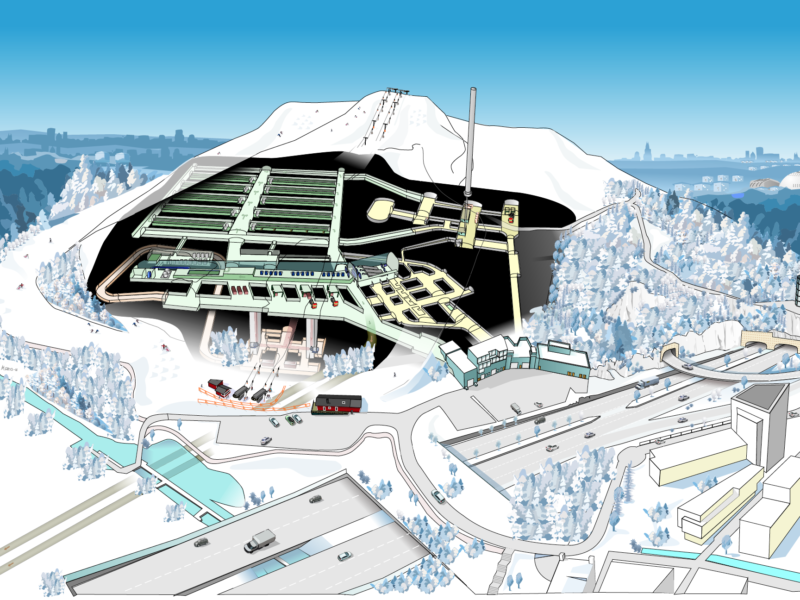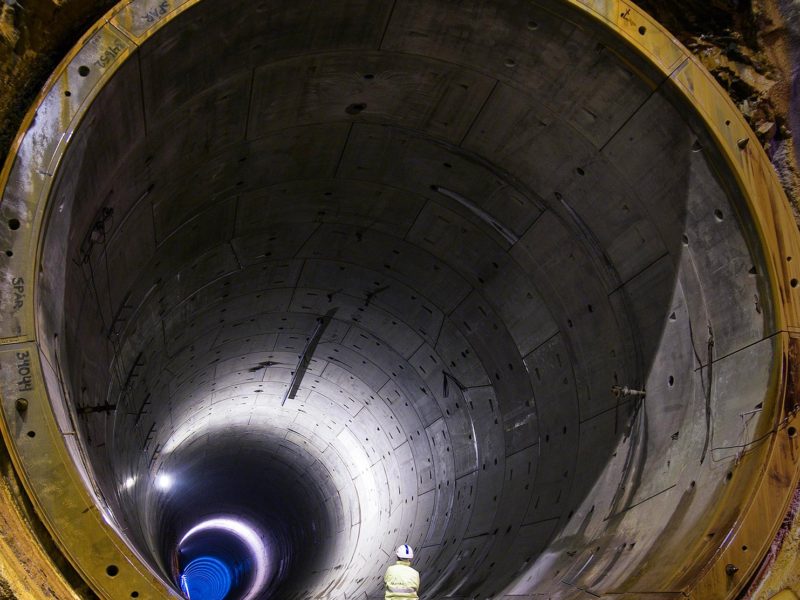Norsborg Metro Depot
The Stockholm metro system is being upgraded, and one of the projects involves the construction of a new depot for trains at Norsborg. Limited space above ground lay behind the decision to build most of the depot in rock caverns. The depot is one of the largest of its kind in northern Europe, and the project was awarded the prize of ‘Outstanding Project of the Year 2015 (up to €50M)’ by the International Tunnelling and Underground Space Association (ITA).

Why underground?
When investigating possible locations for the new metro depot, Stockholm Public Transport (SL) was looking for a site close to the existing metro network, and at the end of a line to minimise transport time to and from the facility. The lack of suitable sites above ground in the central parts of Stockholm further limited the options available, so the decision was taken to build the Norsborg depot underground.
Other factors also lay behind this decision. An underground location is better protected, with few access points and with no exposed railway yards, thereby reducing the risk of intrusion and vandalism. Costs of heating and cooling are lower. The costs of accessing the underground site proved to be significantly lower than a surface facility. The rock spoil could be sold, since it is in demand, and the maintenance needs of an underground depot are less than those for a depot located above ground.
Facility design
The depot provides storage, train washing facilities and service areas for 17 trains, and is also a workplace for around a hundred employees. The depot comprises three rock caverns, each 450 m x 24 m, connecting tunnels, and areas for technical equipment. A 320-m concrete tunnel links the Norsborg metro station to the rock cavern. Two of the tunnels are used as workplaces, while the third is for parking and contains a test track.
In the rock cavern, the insides of the trains are cleaned. The parking tunnel can accommodate eight trains in four rows, with room for a cleaning trolley to pass up and down between the trains. Another facility is a full-length train wash, where the trains are washed approximately every sixth day.
In the rock cavern, the insides of the trains are cleaned. The parking tunnel can accommodate eight trains in four rows, with room for a cleaning trolley to pass up and down between the trains. Another facility is a full-length train wash, where the trains are washed approximately every sixth day. The service building contains five workshop stations for maintenance, a hall for graffiti removal, and staff areas.
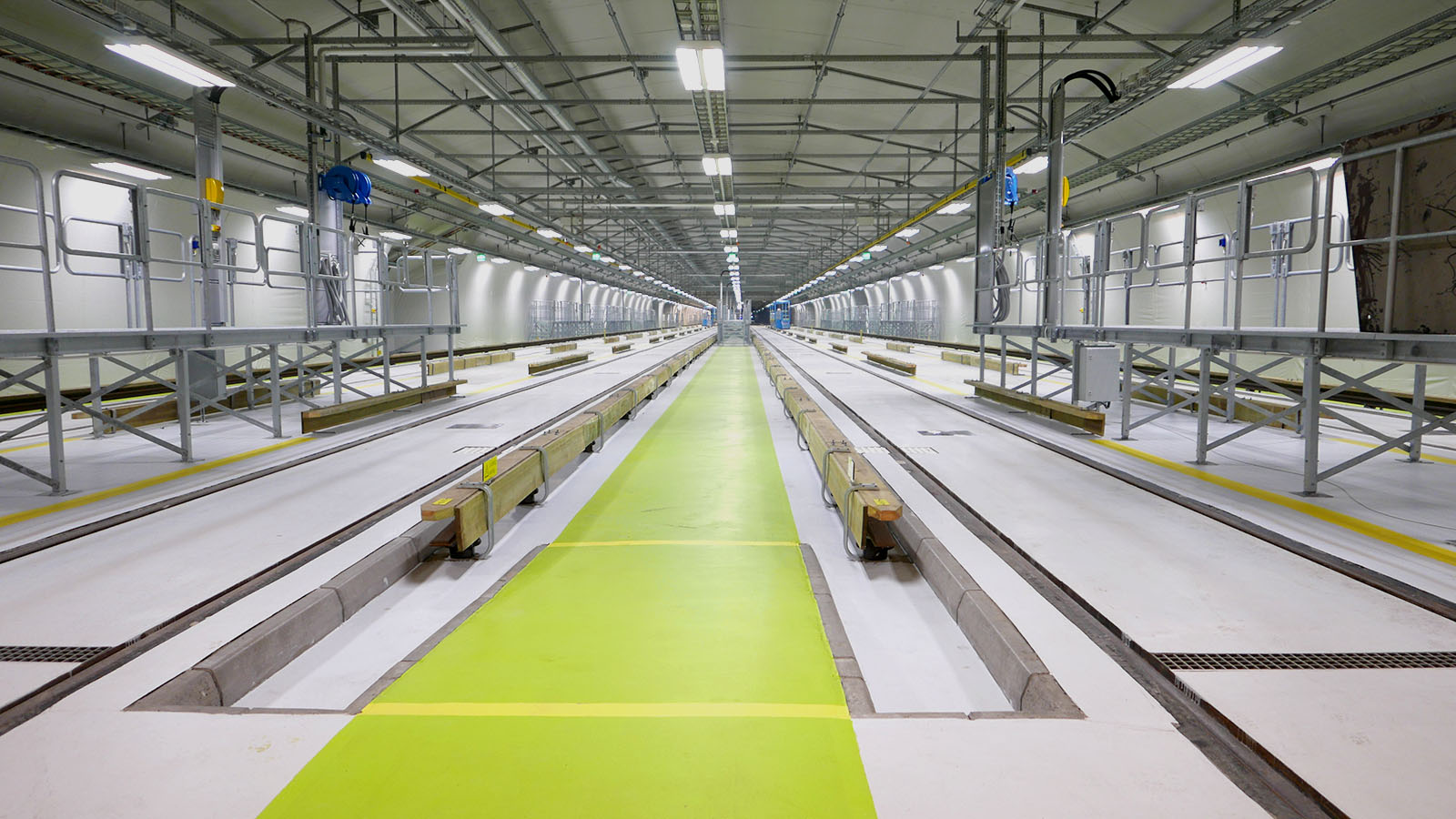
Geoengineering aspects
The caverns are built in hard rock, and were excavated using conventional drill and blast technology. Two three-boom drilling rigs with 20 feet feeders were used and the round lengths were between 3 and 5.8 m. In most of the tunnel sections, the rock support consists of 50 mm shotcrete with steel fibres and systematic 5-m rock bolts, installed in a 2 x 2-m grid.
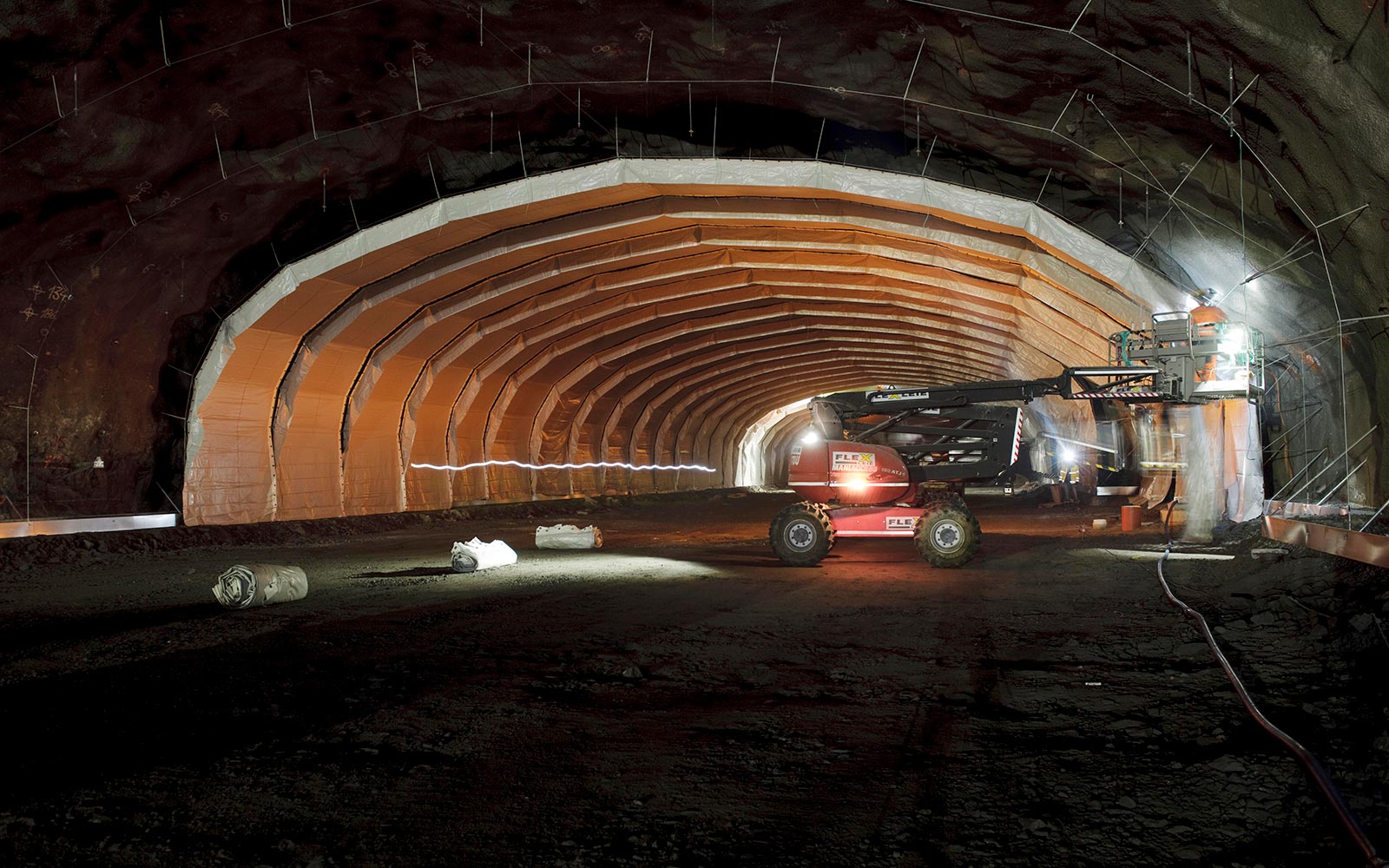
A lightweight inner polyester lining is installed, supported by a system of wires and anchored bolts, forming arches across the cavern every four metres, to which the fabric is attached. This allows the inner lining to be easily shaped into the appropriate geometry to align with changes in tunnel shape. An easily adaptable system was a must in the depot since the geometry varies considerably, with variations between tunnel sections and niches for installations.
Two-thirds of households in Stockholm have access to a car, and around 15 percent of road surfaces are used for parking. Space is at a premium in the city, so there is a strong case for replacing roadside parking with underground car parks. ...
The municipal water company, Stockholm Vatten, has played a significant role in a growing Stockholm since 1861, when the first water treatment plant was built and households began to connect directly to the public water supply. ...
The route of the West Coast Line over the Hallandsås Ridge had been a bottleneck for nearly a century....




